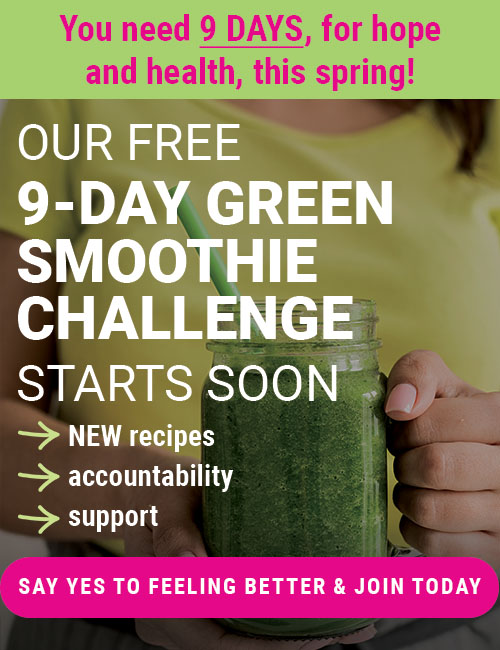tips for eating right inexpensively
Q: Dear GreenSmoothieGirl, I can’t afford to eat the way you suggest. Any ideas?
A: Most people base their purchasing decisions on taste, convenience, price, appearance, and shelf life.
Of course, what tastes good is dictated by our addictions, and you know if you read my blog that sugar is the most addictive substance on the planet. Having to wash fruits and vegetables can’t compete, for convenience. Organic produce doesn’t always look shiny and pretty. And produce and most whole foods don’t last long on the shelf. Nutrition is the loser in most buying criteria and decisions! (If you don’t believe me, take a peek at what’s in virtually all grocery carts next time you’re in the store.)
I do have 11 tips for you to save money (and many more are in 12 Steps to Whole Foods):
- Plan meals ahead of time and keep a shipping list to avoid impulse buying. Along with your shopping list, keep a list of what constitutes “good” prices, as well as a calculator to take along on shopping trips.
- Quit buying chips, soda, and packaged cookies and candy. Quit buying meat. Quit buying fast food. These things are costing you more than you may realize.
- Instead, buy grains and legumes, which are higher in protein than people expect, inexpensive, and they keep in storage for years. Try serving grains/legumes most nights a week instead of meat.
- If you have a family, invest in a big freezer. Put it in the garage. Buy it used if you need to.
- Start learning what things cost, and buy larger quantities (5# or more) of produce, nuts, seeds and grains when they’re in season and on sale.
- Freeze on-sale fruits in small bags in the freezer. Put greens in the freezer for green smoothies, if you can’t use them before they will go bad. Freeze bulk-purchased nuts and seeds in freezer bags.
- Ask around and find the buying co-ops for local produce and health-food items. Get on email lists for those co-ops. You don’t have to buy huge bulk amounts for Azure Standard and other co-ops.
- Dig a cold-storage hole in the ground against your home, if possible, line it with plastic or wood or straw, and put a wooden lid on top. Store potatoes, onions, carrots, homemade sauerkraut, nuts, seeds, and oils through the winter.
- Grow a garden. Even if all you have is a patio or tiny backyard, you can grow a surprising amount of produce. This will give you organic produce, and you can freeze whatever you’re not able to use, for fall and winter months.
- If organic produce is really expensive, buy conventional and just wash it well, with a veggie soap. I use Shaklee Basic H. A gallon of it lasts me a decade.
- Go shopping when you’ve just eaten, not when you’re hungry. Then planning and intelligence informs your shopping decisions (not cravings and addictions).
Posted in: 12 Steps To Whole Food, Gardening, Lifestyle, Whole Food













